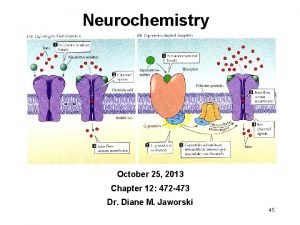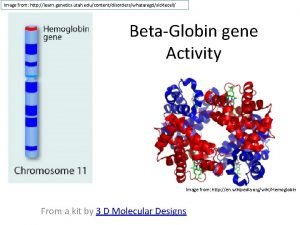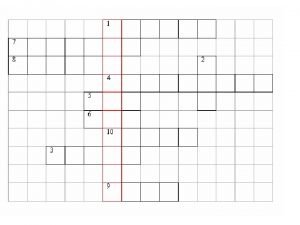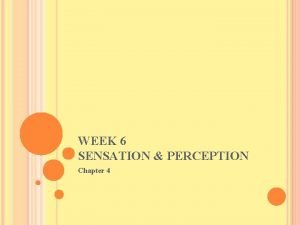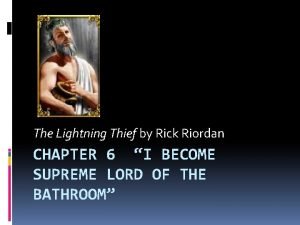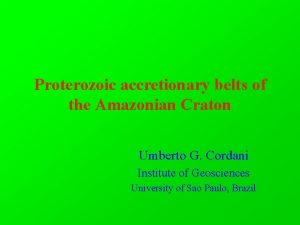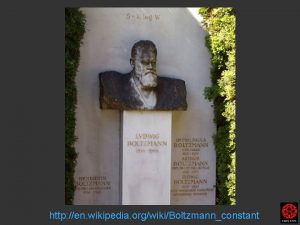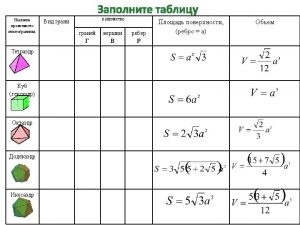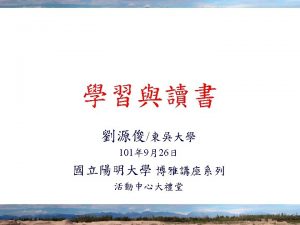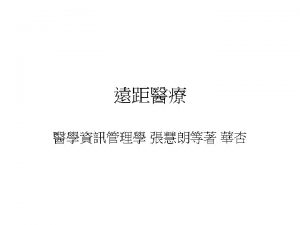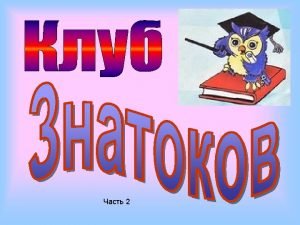To learn more http en wikipedia orgwikiSukkot An








































- Slides: 40


To learn more : http: //en. wikipedia. org/wiki/Sukkot

An Ultra-Orthodox Jewish child walks over palm fronds to be used to build a Sukkah hut, in Jerusalem's religious Mea Shearim neighborhood, Oct. 6, 2011. The palm branches are used as the roof of a temporary house called a "Sukkah" which is built and lived in during the week-long Jewish holiday of Sukkot. (Bernat Armangue/Associated Press)

The selection of the Hadas or Myrtle, one of four plant species to be used during the celebration of Sukkot or the Feast of Tabernacles, is a meticulous process. The Sukkot feast begins October 13 for 2011 and commemorates the exodus of Jews from Egypt some 3200 years ago. (Menahem Kahana/AFP/Getty Images)

An Ultra-Orthodox Jewish man drags palm branches to be used for the celebration of Sukkot, Oct. 9, 2011. (Menahem Kahana/AFP/Getty Images)

An Ultra-Orthodox Jewish man inspects the Hadas or Myrtle in an Ultra-Orthodox neighborhood of Bnei Brak, Oct. 11, 2011. (Jack Guez/AFP/Getty Images)

Ultra-Orthodox Jewish children arrange palm branches used for the celebration of Sukkot in an Ultra-Orthodox neighbourhood of Bnei Brak, Oct. 11, 2011. (Jack Guez/AFP/Getty Images

An Ultra-Orthodox Jewish boy carries palm branches in Jerusalem's Mea Shearim neighborhood, Oct. 11, 2011. The branches are used to cover the roof of the ritual booths known as sukkah, used during the week-long Jewish holiday of Sukkot. (Ronen Zvulun/Reuters)

An Ultra-Orthodox Jewish man inspects the Etrog (citron), one of four plant species to be used during the celebration of Sukkot, in an Ultra-Orthodox neighborhood of Jerusalem, Oct. 9, 2011. (Menahem Kahana/AFP/Getty Images)

A Jewish man and his son are at a shop selling the Etrog (citronin) in an Ultra Orthodox neighborhood of Jerusalem, Oct. 10, 2011. (Menahem Kahana/AFP/Getty Images)



Citrons on Tree

Inspecting Myrtle Branch

A Jewish man and his son are at a shop selling the Etrog (citronin) in an Ultra Orthodox neighborhood of Jerusalem, Oct. 10, 2011. (Menahem Kahana/AFP/Getty Images)

Ultra-Orthodox Jewish men inspect the Etrog (citronin) used during the celebration of Sukkot in an Ultra Orthodox neighborhood of Jerusalem on Oct. 10, 2011. (Menahem Kahana/AFP/Getty Images)

Myrtle branches must be examined to determine if they are ritually acceptable for Sukkot celebrations. This Ultra-Orthodox Jewish man inspects the plant in the orthodox Jewish neighborhood of Mea Shearim in Jerusalem, Oct. 11, 2011. (Oded Balilty/Associated Press

An Ultra-Orthodox Jewish man inspects a Loulav, one of four plant species used during the celebration of Sukkot in an Ultra. Orthodox neighbourhood of Bnei Brak on Oc. 11, 2011. (Jack Guez/AFP/Getty Images)

Orthodox Jews prepare a Sukkah, an outdoor hut, by covering its roof with branches as part of the Sukkot holiday at the Chabad center, Oct. 12, 2011 in Berlin, Germany. Sukkot lasts seven days and community members take celebratory meals inside the Sukkah. (Sean Gallup/Getty Images

Orthodox Jews hold branches and fruit of etrog, a type of citrus fruit, while blessing a sukkah, an outdoor hut, as part of the Sukkot holiday at the Chabad center, Oct. 12, 2011 in Berlin, Germany. (Sean Gallup/Getty Images)


A woman from the ancient Samaritan community decorates a Sukkah made from fresh fruit for the Feast of the Tabernacles, or Sukkot, in Mount Gerizim near the West Bank town of Nablus, Oct. 10, 2011. (Nasser Ishtayeh/Associated Press)

An Ultra-Orthodox Jewish man walks past Sukkahs, temporary structures built for the Jewish holiday, in Jerusalem's Mea Shearim neighborhood, Oct. 10, 2011. The Sukkah is built and lived in during Sukkot. The Sukkah is named for the shelters the Israelites lived in as they wandered the desert for 40 years. (Bernat Armangue/Associated Press)

An Ultra-Orthodox Jewish man builds a Sukkah in Jerusalem's Mea Shearim neighborhood, Oct. 10, 2011. (Sebastian Scheiner/Associated Press)

An Ultra-Orthodox Jewish boy sits outside a Sukkah, Oct. 10, 2011. Several Sukkahs are built in the Mea Shearim neighborhood. (Sebastian Scheiner/Associated Press)

Posters and photographs An Ultra-Orthodox Jewish man builds a wooden Sukkah in the Jerusalem neighborhood of Bati Ungarim on Oct. 10, 2011. (Menahem Kahana/AFP/Getty Images)of rabbis are for sale as decoration for the Sukkah in an Ultra Orthodox neighborhood of Jerusalem on Oct. 10, 2011. (Menahem Kahana/AFP/Getty Images)

An Ultra-Orthodox Jewish man builds a wooden Sukkah in the Jerusalem neighborhood of Bati Ungarim on Oct. 10, 2011. (Menahem Kahana/AFP/Getty Images)

An Ultra-Orthodox Jewish woman walks under a wooden Sukkah in the Jerusalem neighborhood of Bati Ungarim, Oct. 10, 2011. (Menahem Kahana/AFP/Getty Images)

Prayers During Sukkot

Sukkot Prayers with Four Species

Members of the Samaritan community stand atop Mount Gerizim near the West Bank city of Nablus during a traditional pilgrimage marking the holiday of Sukkot, Oct. 11, 2011. The Samaritans trace their ancestry to the northern Israelite kingdom that was destroyed by the Assyrians around 720 BCE. Their faith shares many similarities with Judaism. (Ammar Awad/Reuters)

Members of the ancient Samaritan community walk with prayer mats during a pilgrimage marking the Sukkot holiday near the West Bank town of Nablus, early Oct. 11, 2011. Of the small community of close to 700 people, half live in a village at Mount Gerizim, and the rest in the city of Holon near Tel Aviv. (Tara Todras-Whitehill/Associated Press)

Members of the Samaritan community take part in the traditional pilgrimage marking the holiday of Sukkot early Oct. 11, 2011. (Ammar Awad/Reuters)

Members of the ancient Samaritan community pray during a pilgrimage marking the Sukkot holiday at the religion's holiest site on Mount Gerizim , near the West Bank town of Nablus, early Oct. 11, 2011. (Tara Todras-Whitehill/Associated Press)

An Israeli border guard secures the area as thousands of Jewish men and women participate in a mass Cohanim prayer (priest's blessing) during the annual pilgrimage festival of Sukkot at the Western Wall in Jerusalem's Old City, Oct. 16, 2011. Thousands of Jews make the week-long pilgrimage to Jerusalem during the holiday which commemorates the desert wanderings of the Israelites after their exodus from Egypt. (Menahem Kahana/AFP/Getty Images)

Ultra-Orthodox Jews hold the four plant species -- palm leave stalk, citrus, myrtle and willow branches -- as they perform the Cohanim prayer (priest's blessing) of Sukkot at the Western Wall in the Old City of Jerusalem, Oct. 16, 2011. (Menahem Kahana/AFP/Getty Images)

Covered in prayer shawls, Ultra-Orthodox Jewish men of the Cohanim Priestly caste participate in a blessing during Sukkot in front of the Western Wall, the holiest site Jews pray in Jerusalem's Old City, Oct. 16, 2011. The Cohanim, believed to be descendants of priests who served God in the Jewish Temple before it was destroyed, perform a blessing ceremony of the Jewish people three times a year during the festivals of Passover, Shavuot and Sukkot. (Sebastian Scheiner/Associated Press)

Covered in prayer shawls, Ultra-Orthodox Jewish men of the Cohanim Priestly caste participate in a blessing during Sukkot in front of the Western Wall, Oct. 16, 2011. (Sebastian Scheiner/Associated Press)

Jewish worshippers surround a Torah scroll as they paricipate in the priestly blessing at the Western Wall, Judaism's holiest prayer site, in Jerusalem's Old City, Oct. 16, 2011. The four species are used in rituals during the Jewish holiday of Sukkot, which began last week. (Ronen Zvulun/Reuters)

A presentation by Nubia_group@yahoo. fr http: //www. facebook. com/Nubia. Group We have so many things to discover …
 More more more i want more more more more we praise you
More more more i want more more more more we praise you More more more i want more more more more we praise you
More more more i want more more more more we praise you The more you study the more you learn
The more you study the more you learn Kinesthetic learning
Kinesthetic learning Http://learn.genetics.utah.edu/content/addiction/
Http://learn.genetics.utah.edu/content/addiction/ Http://learn.genetics.utah.edu/content/addiction/
Http://learn.genetics.utah.edu/content/addiction/ Http://learn.genetics.utah.edu/
Http://learn.genetics.utah.edu/ Http //learn.education 2020.com/student
Http //learn.education 2020.com/student Http//learn.edgenuity.com/student
Http//learn.edgenuity.com/student Dogma of biology
Dogma of biology If he had more time he would learn karate
If he had more time he would learn karate We learn more different countries
We learn more different countries If he had more time he would learn karate
If he had more time he would learn karate Http://www.wikipedia.org
Http://www.wikipedia.org Http wikipedia org
Http wikipedia org Http //mbs.meb.gov.tr/ http //www.alantercihleri.com
Http //mbs.meb.gov.tr/ http //www.alantercihleri.com Siat.ung.ac.id krs
Siat.ung.ac.id krs 5 apples in a basket riddle
5 apples in a basket riddle Aspire not to
Aspire not to More inertia
More inertia Knowing more remembering more
Knowing more remembering more The more i give to thee the more i have
The more i give to thee the more i have More choices more chances
More choices more chances Human history becomes more and more a race
Human history becomes more and more a race Learn xtra live
Learn xtra live Dimitri and linda are trying to learn a new routine
Dimitri and linda are trying to learn a new routine Learnsanskritfromhome
Learnsanskritfromhome Pros and cons of learning german
Pros and cons of learning german Chapter 6 percy jackson and the lightning thief
Chapter 6 percy jackson and the lightning thief Learn to lead chapter 6
Learn to lead chapter 6 I hate careless people. that’s why i like you
I hate careless people. that’s why i like you The great gatsby summary
The great gatsby summary Learn hibernate
Learn hibernate Sharelearnteach
Sharelearnteach New ways to learn
New ways to learn Dlpy sas
Dlpy sas Learn pig latin
Learn pig latin Woopmay orogeny
Woopmay orogeny Learn.genetics.utah/content/addiction/mouse
Learn.genetics.utah/content/addiction/mouse Nihr learn
Nihr learn He should study hard
He should study hard





